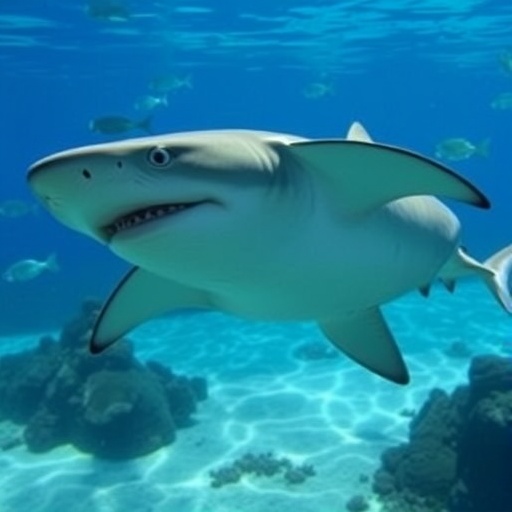In a groundbreaking study led by researchers at Newcastle University, new light has been shed on how sharks, skates, and rays—collectively known as elasmobranchs—adjust their growth and reproductive strategies in direct response to changes in food availability. By analyzing a diverse group of 151 species, this research reveals a remarkable plasticity in life-history traits that challenges longstanding assumptions in marine ecology and conservation biology.
Traditionally, the reproductive capacity and turnover rates of elasmobranch populations have been viewed through a relatively rigid lens, largely shaped by evolutionary lineage and fixed life-history characteristics. However, this study unveils that these species exhibit dynamic adaptability, modulating offspring production and generation replacement rates based on the ambient feeding conditions they experience. This indicates an intricate coupling between energy acquisition and life-history strategy, a relationship far more malleable than previously recognized.
Central to this research was the innovative use of demographic data integrated with energy-budget theory, a mechanistic framework that quantifies how organisms allocate limited energetic resources among growth, maintenance, and reproduction. By mapping out a ‘life-history space’ driven by energetic inputs and outputs, the researchers created a predictive model that not only contextualizes species strategies on an energetic basis but also evaluates their responsiveness to environmental fluctuations such as variations in prey abundance.
A striking finding from this approach is the apparent disconnect between traditional conservation metrics—like the IUCN Red List status—and species’ reproductive output or generation turnover. This suggests that vulnerability assessments based solely on demographic rates may overlook critical nuances controlled by energetic flexibility. Instead, the study advocates for models incorporating feeding dynamics and energy budgets to better estimate species resilience and sustainability under fishing pressures and climate-induced habitat changes.
Moreover, the study emphasizes that commonly employed indicators, such as population growth rate alone, fail to capture the subtleties of how elasmobranchs might withstand external pressures related to food scarcity or exploitation. Detailed statistical analyses reveal that these organisms balance their energy expenditures strategically, allocating additional resources to reproduction when food is plentiful, thereby accelerating population turnover and potential recovery.
The adaptive plasticity discovered holds profound implications for ecosystem management and conservation efforts. Since elasmobranchs often occupy top predator niches, understanding their life-history flexibility is crucial for predicting trophic cascade effects and maintaining marine biodiversity. The capacity for these species to modulate their reproductive strategies based on resource availability also suggests a potential buffer against environmental perturbations, although the limits and costs of such plasticity remain to be fully elucidated.
Conservationist and marine ecologist Dr. Isabel Smallegange highlights the novelty of this work by noting how it fills a critical knowledge gap. Despite the ecological importance of feeding dynamics, comparative data across multiple species and variable feeding conditions have been scarce until now. This research, by synthesizing extensive demographic and energetic datasets, offers an unprecedented quantitative insight into the life-history continuum of elasmobranchs, facilitating nuanced conservation tailored to species-specific energetics.
The study’s lead PhD researcher, Sol Lucas, articulates the significance of these findings in real-world contexts. Life-history adaptability shapes not only the intrinsic population growth potential but also determines recovery trajectories following declines caused by overfishing or habitat degradation. By linking energy budgets directly to these demographic processes, conservation strategies can become more predictive and adaptive, potentially averting population collapses.
Methodologically, this research employed rigorous statistical analyses, combining empirical demographic observations with energy allocation models grounded in metabolic theory. This hybrid approach offers a mechanistic, predictive framework uncommon in marine conservation biology, moving beyond correlative studies to deeper causal inference regarding life-history evolution and ecological resilience.
Future directions underscored by the authors call for exploring environmental drivers that may further influence the plasticity of growth and reproduction in elasmobranchs. Such investigations would aim to identify species or populations possessing greater adaptive capacity, thereby prioritizing conservation actions and fishing regulations that align with biological reality and ecosystem sustainability.
This study, published in the renowned journal Ecology Letters, represents a paradigm shift in our understanding of marine predator life histories. It implores a re-evaluation of conservation models to incorporate dynamic energy-based frameworks, particularly in the face of escalating anthropogenic pressures and rapidly changing oceanic ecosystems.
By bridging ecological modeling, population biology, and energetics, this research paves the way for integrating physiological and environmental factors into conservation decision-making. The implications extend well beyond elasmobranchs, suggesting similar plasticity might exist in other marine taxa, inviting a broader reconsideration of life-history adaptation under global change.
In summary, the study reveals an unexpected complexity and flexibility underlying elasmobranch life histories, providing a vital tool for scientists and policymakers striving to safeguard these ancient species. As we deepen our understanding of how energy availability shapes biological strategies, we approach a more nuanced stewardship of marine ecosystems—today’s findings mark a significant milestone in that journey.
Subject of Research: Elasmobranch life-history strategies and their plasticity in response to changing feeding levels.
Article Title: Changing Feeding Levels Reveal Plasticity in Elasmobranch Life History Strategies
News Publication Date: 3-Sep-2025
Web References:
https://onlinelibrary.wiley.com/doi/10.1111/ele.70201
http://dx.doi.org/10.1111/ele.70201
References:
Lucas, S., P. Berggren, E. Barrowclift, and I. M. Smallegange. 2025. “Changing Feeding Levels Reveal Plasticity in Elasmobranch Life History Strategies.” Ecology Letters 28, no. 9: e70201.
Keywords: Marine fishes, Marine conservation, Ecosystem management, Ecological modeling




